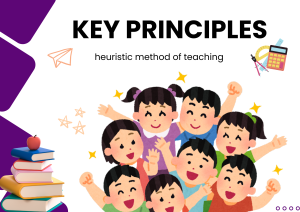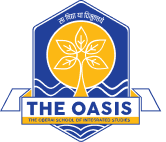
The Heuristic Method of Teaching is more than a method—it’s a mindset. It puts the student at the center and encourages them to learn not just facts, but the process of thinking itself. This approach is increasingly being embraced by boys boarding schools in Dehradun, where the focus is on developing independent learners and critical thinkers in a structured, yet progressive environment While it may not fit every subject or student, when used well, it brings learning to life.
Curious to see the impact for yourself? Try adding just one heuristic activity to your next lesson or study session. You might be surprised by how much more students engage.
Let’s break it down: what is the Heuristic Method , how it works, its benefits, and its potential drawbacks.
- What is the heuristic method of teaching?
- Key principles of the heuristic method of teaching
- Advantages of the heuristic method of teaching
- Steps to Apply the heuristic method of teaching
- Where The heuristic method of teaching Works Best
- Limitations of the heuristic method of teaching
- Practical Strategies for Instructors
- Final Thoughts
- Frequently Asked Questions
What is the heuristic method of teaching?
The heuristic method of teaching is a method of learning in which students experiment and learn things for themselves. Rather than providing solutions, instructors serve as facilitators. Students pose questions, test hypotheses, observe, and make their own conclusions. This method promotes independence, curiosity, and critical thinking.
The term “heuristic” comes from the Greek word heuristic, which translates to “to find” or “to discover.” Therefore, the primary objective here is straightforward: teach students how to think, not what to think.
Key principles of the heuristic method of teaching

1. Discovery Learning
The learner discovers the knowledge by finding solutions to problems or investigating situations.
2. Minimal Intervention on the Part of the Teacher
Teachers offer tools, questions, and guidance but refrain from providing direct solutions.
3. Trial and Error
Making errors is promoted. It’s where genuine learning occurs.
4. Personal Effort
Students learn for themselves, constructing their knowledge.
5. Application to Everyday Life
Learning must be applied and relevant to real life.
Advantages of the heuristic method of teaching
There’s a reason the heuristic method of teaching is gaining traction throughout contemporary classrooms. It’s not about book smarts; it’s about developing life skills.
1. Promotes Curiosity
Students become more engaged because they discover solutions to problems or learn things independently.
2. Encourages Independent Thinking
They learn to make decisions, weigh choices, and analyze their findings.
3. Improved Retention
Learning by doing makes students retain concepts for longer.
4. Creates Confidence
When students learn to solve issues independently, they feel confident and inspired.
5. Improves Critical Skills
Skills such as observing, thinking logically, and analyzing are sharpened naturally.
Steps to Apply the heuristic method of teaching
Applying the heuristic method of teaching effectively needs an organized plan. Here’s a simple step-by-step guide:
Step 1: Introduce a Problem or Scenario
Begin by presenting students with an issue or scenario to be solved.
Example: “Why do ice cubes float in water but fall in alcohol?”
Step 2: Give Resources
Provide resources, information, or references—but not the answer.
Step 3: Let Exploration
Let students explore, debate, experiment, and make conclusions.
Step 4: Facilitate, Don’t Direct
The instructor only intervenes when students are stuck or require direction.
Step 5: Reflect and Apply
Students conclude their findings and apply them to analogous or real-world problems.
Where The heuristic method of teaching Works Best
This approach is best in topics where discovery and experimentation naturally fit into the process.
Science: Laboratory experiments, ecological studies
Mathematics: Puzzles, problems of logic
Social Science: Debates, research projects
Language Arts: Creative writing, literature analysis
It’s particularly effective in experiential learning settings or where creativity and critical thinking are emphasized.
Limitations of the heuristic method of teaching
Though much is to be admired, the Heuristic Method of Teaching is not flawless. It has its limitations.
1. Time-Consuming
Discovery is time-consuming, and not every subject can indulge in it.
2. Not Always Practical
Some subjects, particularly background facts or definitions, require direct instruction.
3. Demands Competent Teachers
Guiding and not teaching is an art that not all teachers possess.
4. Not Ideal for All Students
Certain students might flounder with no structured instruction or explicit directions.
5. Evaluation is More Difficult
Standard tests will not necessarily reflect heuristic learning outcomes accurately.
Practical Strategies for Instructors
Consider using the Heuristic Method of Teaching in your classroom? Here are some tips:
- Select topics that provide room for exploration.
- Develop open-ended questions.
- Resist the urge to jump in with answers.
- Employ group work to facilitate learning.
- Reflect at the conclusion of every activity.
Final Thoughts
The heuristic method of teaching is not just a method—it’s an attitude. It places the student first and invites them to learn not only facts, but the act of thinking itself. Though it may not suit every subject or student, when used effectively, it brings learning alive.
Want to see the effect yourself? Experiment by incorporating just one heuristic activity into your next lesson or study session. You may be amazed by how much more students participate.
Frequently Asked Questions
- What is the heuristic method of teaching?
It is a student-focused mode of instruction where students learn facts by way of discovery and problem-solving.
- What is the overall aim of the heuristic approach?
The aim is to get the students to think for themselves, rather than memorize information.
- Which topics most gain from the heuristic method?
Science, mathematics, social studies, and language arts—particularly in active or creative learning.
4.What’s an example of a heuristic activity?
Having the students find out why ice floats in water but sinks in alcohol by conducting experiments themselves.
- What are a few difficulties teachers experience with this approach?
Time limitations, variable learning styles, and creating open-ended but effective activities



